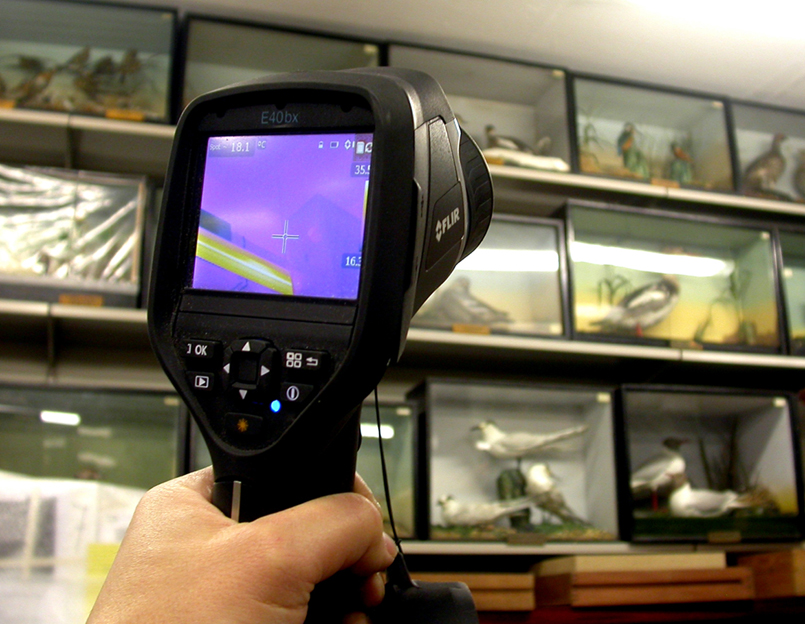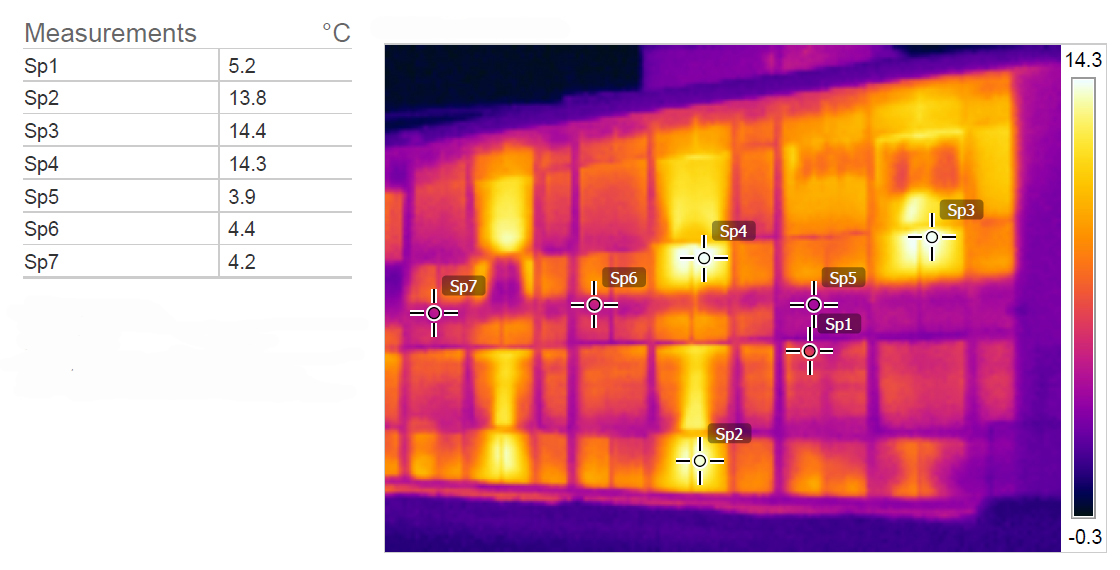Speaker: Nigel R. Larkin
Event: The SPNHC (Society for the Preservation of Natural History Collections) meeting in Cardiff, Wales, in June 2014.

 Abstract
Abstract
Natural history collections often contain specimens with conflicting environmental requirements. Therefore the (sometimes subtle) differences in environmental conditions within a collections storage area should be exploited appropriately - if the different microenvironments can be identified and quantified. Digital infrared thermal imaging cameras can be used to instantly and accurately measure and visualise even subtle temperature gradients within a store, to provide a much more detailed understanding of the complexities of a three-dimensional space than any other datalogging equipment can currently provide. The differences in temperature can be used to infer likely differences in relative humidity levels as well. Digital infrared images present their temperature data in a highly visual format that is generally intuitively understood and is easily analysed with proprietary software. Using an infrared camera to investigate storage or display areas will reveal, for instance, temperature gradients due to stratification, hot spots, cool drafts, damp patches and unlagged heating pipes under floors etc – all of which would otherwise be invisible. Some of these differences will be subtle but some can be surprisingly abrupt and extreme, and none would be picked up by ‘traditional’ methods unless a huge amount of time and money were deployed. Whilst infrared cameras are sometimes used in museums to investigate where energy (and finances) can be conserved, their application for collections management purposes is rare simply due to a lack of awareness of how the technology can be usefully applied. Several factors influence the accuracy of the interpretation of the data so training is required.
Above left: Example 1 - an unlagged hot water pipe clearly runs under the floor in this art store (about which the curator knew nothing), creating a large local warm spot under clutter, creating conditions pefect for pest infestation (the curator simply had to remove the clutter). Above right: Example 2 - this gallery has a surprisingly wide range of microenvironments including warm spots on the walls created by spotlights, cool spots due to air vents and also some stratification of temperatures. Interestingly, the beams behind the plaster of the wall are also apparent.






